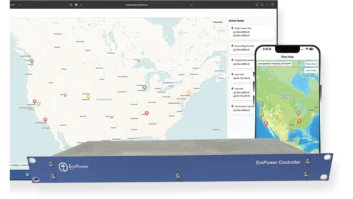The Federal Communications Commission, as we’ve reported, has adopted new rules permitting the use of Method of Moments computer analysis for AM directional arrays.
The use of computer modeling eliminates the ambiguity and inaccuracy that can be encountered with measured field intensity readings used to establish proper array performance.
In many cases extreme environmental changes have taken place since the last original proof-of-performance to which recent measurements are compared. New construction and installation of overhead and/or underground utilities can render comparison useless even if the original locations are still accessible. Seasonal differences can also greatly affect the accuracy of comparison if measurements are performed under different conditions than the original proof.
Monitor points can be influenced by nearby construction, causing one to believe the array is out of adjustment and make unnecessary adjustments. Graphical analysis of measured data to calculate Inverse Distance Fields can be ambiguous. The mathematical model employed in the FCC’s computer program can produce different results with minor data input variations. MoM modeling eliminates these ambiguities.
The Method of Moments does not rely on the simple sinusoidal assumptions upon which FCC equations rely. The engineer can construct a very accurate model of the array and feeder system allowing analysis and optimization of pattern and impedance bandwidth. Recall that when carrier frequency is changed (as in sideband analysis) the tower electrical heights and spacings change, as do the transmission line electrical lengths and component reactances. A matrix model allows one to view the carrier and sideband patterns and impedances and provides the ability to design the phasing/coupling system for optimum performance.
Computer analysis emphasizes attention to the most important part of a directional antenna array, that being the sampling system, which provides information on the operation of the antenna system. By performing routine tests on the sampling system, one is assured that the phase and ratio values displayed on the antenna monitor are indeed accurate. When an array appears to be malfunctioning, the primary question is whether the issue is with the array or the sample system. By having measured data on the array elements and sample system in hand, the engineer can quickly determine what may have changed and take corrective action.
MoM software can also be used a troubleshooting aid if problems with the feeder system arise. Field intensity measurements were customary and more reliable when urban sprawl was not as predominant as it is today. Many times valid measuring locations can become inaccessible within a year of being established in an original proof. MoM computer modeling offers the advantage of accurate drive point impedance prediction and the ability to optimize sideband performance resulting in the best audio quality at the receiver.
Computer analysis is beneficial to the station’s bottom line. The cost of having a competent engineer travel to monitoring locations to perform measurements and the analysis of those measurements is greatly reduced, especially if the station has different day/night patterns. The expense of trial-and-error tuneup is also reduced due to the inherent accuracy of the MoM array model. Interference reduction by operating with correct parameters is another advantage. Some arrays may have deeper and/or displaced minima where they are unwanted and unnecessary.
While some engineers may not be persuaded to adopt new methodology quickly, they should consider the number of arrays that have realized benefits from the use of such technology.
— Radio World







